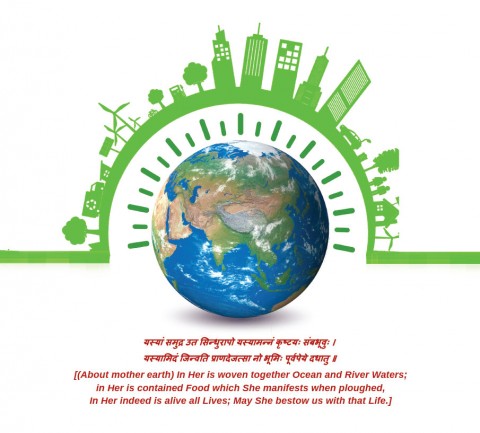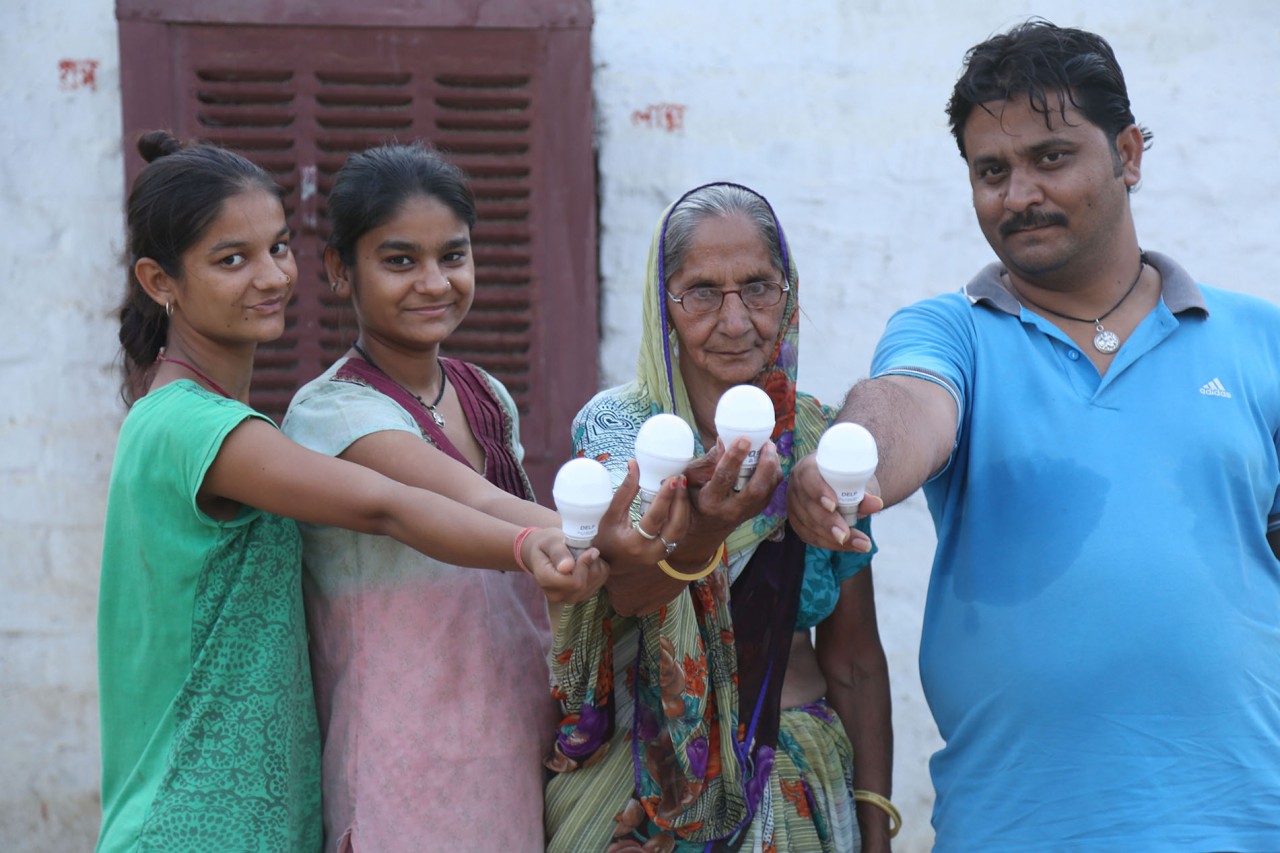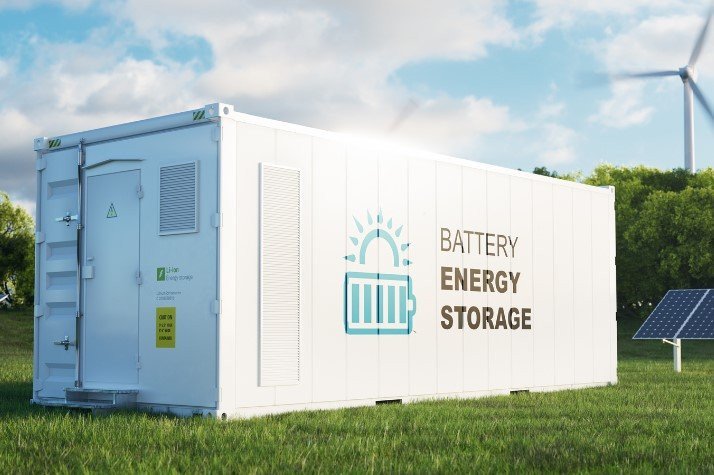Green charging the clean earth drive
Since time immemorial, with ancient texts as testimony, in India the earth has been revered as 'mother earth' and prayed to as the one that sustains life and gives in abundance. Undoubtedly, we all depend on the resources of nature for sustaining our lives; the personified siring earth gives without discrimination and without holding back. There is no question about that. The question, though, is what are we as 'takers' doing about maintaining the sustenance.
This month (April 22) will see the world acknowledge the 'giving power' of nature and celebrate its abundance on 'Earth Day'. The intention is to not only express gratitude but also to vow and implement ways to preserve, protect and nurture the earth and all species, big and small, that thrive on it.
The first Earth Day (observed in the US in 1970) initiated a movement that today includes events coordinated around the world by the Earth Day Network, in over 193 countries. This year is the 50th Earth Day. The theme assigned this year is 'Climate Change'; couldn't be a more appropriate topic in these pressing times.
Climate change and its fallout will be the biggest threat we will face in the near future. Reducing green cover, increasing pollution levels, drastic weather changes, ruptured ozone layer, melting ice caps, rising sea levels… warning bells are loud enough to deafen.
Come to think of it, it's a wonder we still have something to protect and preserve for the coming generations. Which means, whatever we are doing now should be done on a war-footing. Are we in combative position, ready with the protection gear?
Tackling climate change will be difficult without first reducing harmful emissions and our reliance on fossil fuels. India has realized the importance of introducing and implementing environmental control measures. We have set targets and long-term plans for managing climate change concerns. Enactment of suitable legislation and making use of best available technology to handle environmental issues may seem like a small step but will go a long way.
Karuna Singh, Regional Director and India Director – Earth Day Network, said that awareness is key to the success of every initiative. In her opinion, for India, renewables would be the best route to fight climate change, followed by pollution control. India has excellent environment-related legislation, she said, that people could benefit from if there is awareness.
Reliable renewables
India stands at number three in the world for greenhouse gas emissions, after China and the US. Despite efforts to promote renewable energy, India still relies heavily on fossil fuel for power. Around 60 percent of our electricity generation is still dependent on coal. Notwithstanding our commitment to RE, the transition is not going to be an easy one.
One of the possibilities is to increase the share of RE in the national energy mix. Rapid industrialization and infrastructure development in the country is not only increasing the demand for energy but is also contributing to air and water pollution. Over this, we are now also promoting
'Make in India' with an aim to transform India into a manufacturing hub. While this might reduce our dependence on other countries for resources, it will definitely further escalate energy demand.
Currently, RE accounts for a little more than 20 percent (not including hydro power) of India's total installed capacity of about 357GW.
A targeted figure of 175GW of installed RE capacity by 2022 is desired. For some industry speculators, what India hopes to achieve might seem rather ambitious owing to an investment slowdown in the RE sector. But if you take a look at the figures, it won't be wrong to hope. For example, reports have shown that in 2014 we had just about 3GW of solar power but by 2017 it had increased to almost 20GW, and now the objective is to increase it fivefold by 2022.
Just increasing RE contribution to the energy staple is not the solution, RE grid integration will be a poser too. This raises concerns for system planning and operations; a need to scale up the grid, enhanced flexibility of the power system, incorporation of storage, etc, are some of the issues that need to be addressed.
The government is committed to achieving the targets it has set for increased use of renewable energy sources. It has undertaken many sustainable power projects, and is promoting use of green energy through various schemes, policies and incentives in a bid to stimulate growth and attract investments.
In a recently held online meeting with its officers, MNRE has decided to "issue uniform combined guidelines for procurement of Renewable Energy (solar, wind, hybrid) including storage to facilitate investment in the sector and will continue to bring new bids so that investors can plan their investment."
Date: April 22
Objective: to demonstrate support for environmental protection
Theme this year: Climate Change
First celebrated: in the US in 1970
Coordinator: Earth Day Network
Earth Day is recognised as the world's largest civic event, celebrated in over 193 countries. This year is its 50th anniversary. Unfortunately, due to the Covid-19 pandemic, this year digitally held events will replace conventional celebratory gatherings.
Earth Day organizers will employ non-traditional formats such as a global 'digital' strike with 'nonstop series of videos, of petitions, of things you can do that will run the 24 to 48 hours of Earth Day.'
For more details on Earth Day campaigns and events, visit the Earth Day Network website.
Efficient energy consumption
PAT was established by the National Mission for Enhanced Energy Efficiency, to reduce energy consumption and promote enhanced energy efficiency among specific energy intensive industries in the country. It is a regulatory instrument that has an associated market-based mechanism to enhance the cost effectiveness through certification of excess energy saving, which can be traded.
Energy performance standards are important for lighting and cooling as well. Increasing industries and concretization of urban spaces has made the use of efficient lighting and cooling systems imperative.
According to reports, an ordinary bulb is an extremely energy 'inefficient' form of lighting with just 5 percent of the electricity input converted to light. Efficient LED bulbs consume only one-tenth of the energy used by ordinary bulbs to provide the same or better light output. However, high cost of LEDs has been a deterrent in the adoption of such efficient lighting systems.
To counter this problem the Domestic Efficient Lighting Program (DELP) was introduced under the name UJALA – Unnat Jyoti by Affordable LEDs for All. Through this scheme, 20W LED tube lights and also BEE 5-star rated energy efficient fans are distributed to the consumers that are considerably lower priced than regular tubes and fans.
The main objective of this program - implemented by the Electricity Distribution Company and Energy Efficiency Services Limited (EESL) - is to promote efficient lighting, enhance awareness on using efficient equipment that reduce electricity bills and help preserve environment.
One of the fallouts of climate change is the rapidly rising temperatures. Extremely high heat waves experienced during summers have already claimed many lives across the country. So, like energy saving lighting, appropriate policies to implement efficient cooling will be needed to handle the heat stress. At the same time, it should be ensured that our efforts comply with international mandates that include eliminating coolants that harm the ozone layer or heat up the atmosphere.
Source: Vikaspedia, InDG
The measurement of air quality is based on eight pollutants - PM10, PM2.5, NO2, SO2, CO, O3, NH3, and Pb - for which short-term (up to 24-hourly averaging period) National Ambient Air Quality Standards are prescribed. The worst reading in these pollutants represents the AQI for that city.
Pollution control measures
Air pollution is posing serious health issues in India. As per reports in 2019, of the most polluted cities in the world, 21 out of 30 were in India. That is alarming. Even with the people living outside the cities, air pollution caused by burning of biomass like wood and cow dung for cooking and heating and burning crop stubble, is a matter of concern.
While in the cities, transportation remains one of the main causes of polluted air. With a steady increase in the number of ICE vehicles and construction activity in the urban areas, air pollution has become a serious health hazard.
The Indian government is showing deep commitment in this direction and has made available clean fuel for household cooking in the rural areas under the Pradhan Mantri Ujjwala Yojana (PMUY) in 2016. The objective of this scheme is to distribute 50 million LPG connections to poor families.
The government is also making efforts to align sustainable development policies to the implementation of advanced emission control technologies to provide NAAQS-compliant air quality to about 85 percent of the Indian population.
As mentioned in some published reports, in 2015 more than half the Indian population – about 670 million citizens – was exposed to PM2.5 concentrations that did not comply with India's NAAQS for PM2.5 (40 migrograms per cubic metre). Less than one percent enjoyed air quality that met the WHO standards.
Last year the government launched the National Clean Air Program (NCAP), a five-year action plan to curb air pollution and build a pan-India air quality monitoring network, and improve citizen awareness. The program focuses on 102 polluted Indian cities and aims to reduce PM2.5 levels by 20-30 percent over the next five years.
It has been suggested that if supported by a legal mandate, NCAP could ensure successful implementation of emission control measures. Air pollution control has to be strategic and planned in phases to ensure a gradual reduction of pollution levels.
Government's initiatives under FAME-II will also give a boost to the e-mobility sector and we can hope for a much-required transition from IC to electric-run vehicles.
1986 – The Environment (Protection) Act authorizes the central government to protect and improve environmental quality, control and reduce pollution from all sources, and prohibit or restrict the setting and /or operation of any industrial facility on environmental grounds.
1986 – The Environment (Protection) Rules lay down procedures for setting standards of emission or discharge of environmental pollutants.
1989 – The objective of Hazardous Waste (Management and Handling) Rules is to control the generation, collection, treatment, import, storage, and handling of hazardous waste.
1999 – The Environment (Siting for Industrial Projects) Rules, 1999 lay down detailed provisions relating to areas to be avoided for siting of industries, precautionary measures to be taken for site selecting as also the aspects of environmental protection which should have been incorporated during the implementation of the industrial development projects.
2000 – The Ozone Depleting Substances (Regulation and Control) Rules have been laid down for the regulation of production and consumption of ozone depleting substances.
2001 – The Batteries (Management and Handling) Rules, 2001 rules shall apply to every manufacturer, importer, re-conditioner, assembler, dealer, auctioneer, consumer, and bulk consumer involved in the manufacture, processing, sale, purchase, and use of batteries or components so as to regulate and ensure the environmentally safe disposal of used batteries
1927 – The Indian Forest Act and Amendment, 1984, is one of the many surviving colonial statutes. It was enacted to 'consolidate the law related to forest, the transit of forest produce, and the duty leviable on timber and other forest produce'.
1972 – The Wildlife Protection Act, Rules 1973 and Amendment 1991 provides for the protection of birds and animals and for all matters that are connected to it whether it be their habitat or the waterhole or the forests that sustain them.
1980 – The Forest (Conservation) Act and Rules, 1981, provides for the protection of and the conservation of the forests.
1974 – The Water (Prevention and Control of Pollution) Act establishes an institutional structure for preventing and abating water pollution. It establishes standards for water quality and effluent. Polluting industries must seek permission to discharge waste into effluent bodies.
The CPCB (Central Pollution Control Board) was constituted under this act.
1948 – The Factories Act and Amendment in 1987 was the first to express concern for the working environment of the workers. The amendment of 1987 has sharpened its environmental focus and expanded its application to hazardous processes.
1981 – The Air (Prevention and Control of Pollution) Act provides for the control and abatement of air pollution. It entrusts the power of enforcing this act to the CPCB.
Source: http://edugreen.teri.res.in/










